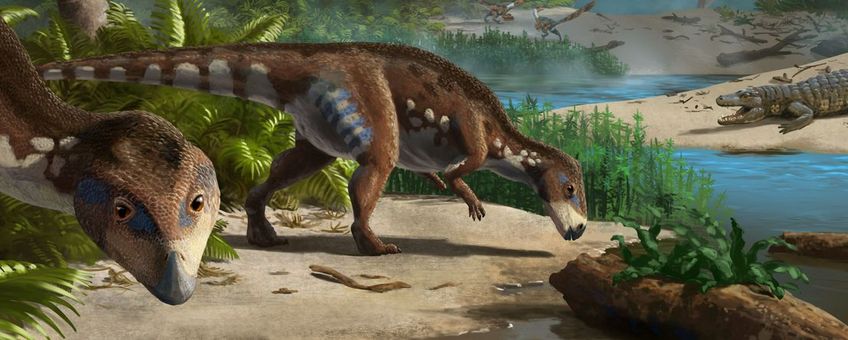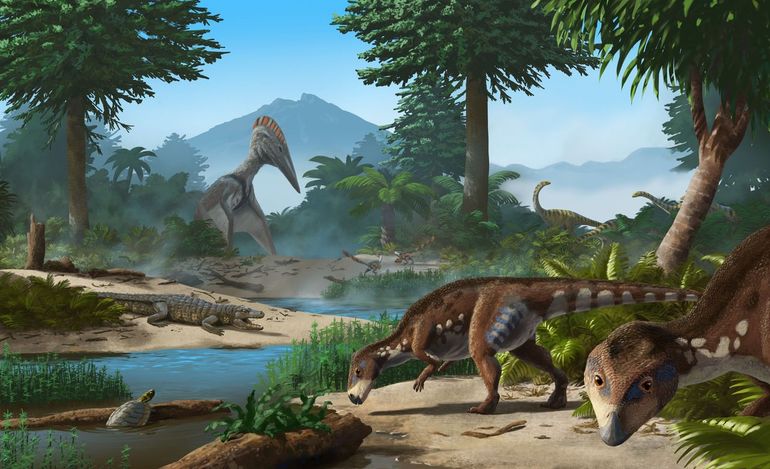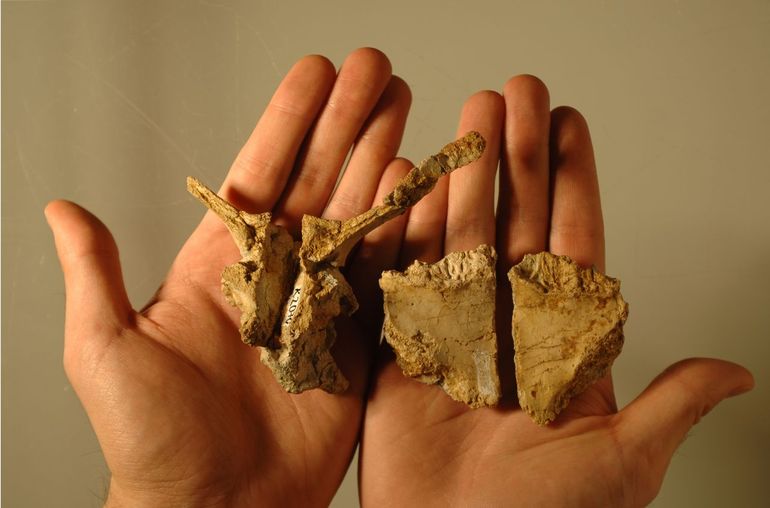
Flat-headed reptile from Transylvania offers new insights into European island faunas at end of Cretaceous period
Naturalis Biodiversity CenterTransylvanosaurus platycephalus literally means 'flat-headed reptile from Transylvania'. The previously unknown dinosaur was roughly two meters long, walked on two legs, and lived during the Late Cretaceous. In Transylvania they, like other local dinosaurs, only reached a small body size and are therefore known as ‘dwarf dinosaurs’.
Europe during the Cretaceous period
For most of the Cretaceous period, which lasted from 145 million years to 66 million years ago, Europe was a tropical archipelago. “Presumably a limited supply of resources in these parts of Europe at that time led to an adapted small body size,” says Augustin. Transylvanosaurus lived on one of the many islands together with other dwarf dinosaurs, crocodiles, turtles, and giant flying reptiles (pterosaurs) which had wingspans of up to ten meters. “With each newly-discovered species we are disproving the widespread assumption that the Late Cretaceous fauna had a low diversity in Europe,” says Augustin.

Family in France
Transylvanosaurus is part of the common group of small to medium European herbivores during the late Cretaceous. Related species previously found in the same area had far narrower skulls than Transylvanosaurus. On the other hand, its nearest relatives lived in what is today France – this was a massive surprise to the scientists. How did Transylvanosaurus find its way to the Island of the Dwarf Dinosaurs in what is now Transylvania?
Land bridges and good swimmers
The team of researchers reconstructs various possibilities. The oldest finds assigned to this group of herbivores come from Eastern Europe – the animals could have spread westwards from there, and later certain species could have returned to Transylvania. Fluctuations in sea level and tectonic processes created temporary land bridges between the many islands and could have encouraged these animals to spread, the scientists conjecture. Furthermore, it can be assumed that almost all dinosaurs could swim to an extent, including Transylvanosaurus. “They had powerful legs and a powerful tail. Most species, in particular reptiles, can swim from birth,” says Augustin. Another possibility is that Transylvanosaurus and its French relative developed parallel to each other in eastern and western Europe.
Little to work with
Precisely how Transylvanosaurus ended up in the eastern part of the European archipelago remains unclear for now. “We have currently too few data at hand to answer these questions,” says Augustin. The team had only a few bones for the classification, and none longer than twelve centimeters: the rear part of the skull and two frontal bones. “On the inside of the frontal bone it was even possible to discern the contours of the brain of Transylvanosaurus”, Bastiaans adds.

Haţeg Basin
The team of researchers discovered the bones in 2007 in a riverbed of the Haţeg Basin in Transylvania. The Haţeg Basin is one of the most important places for Late Cretaceous vertebrate discoveries in Europe. A total of ten dinosaur species have already been identified there. The bones of Transylvanosaurus were able to survive for tens of millions of years because they were protected by the sediments of an ancient riverbed. “If the dinosaur had died and simply lain on the ground instead of being partly buried, weather and scavengers would soon have destroyed all of its bones and we would never have learned about it.”
More information
- The entire article is published in the Journal of Vertebrate Paleontology.
Text: Naturalis Biodiversity Center
Photos: Peter Nickolaus, Dylan Bastiaans
